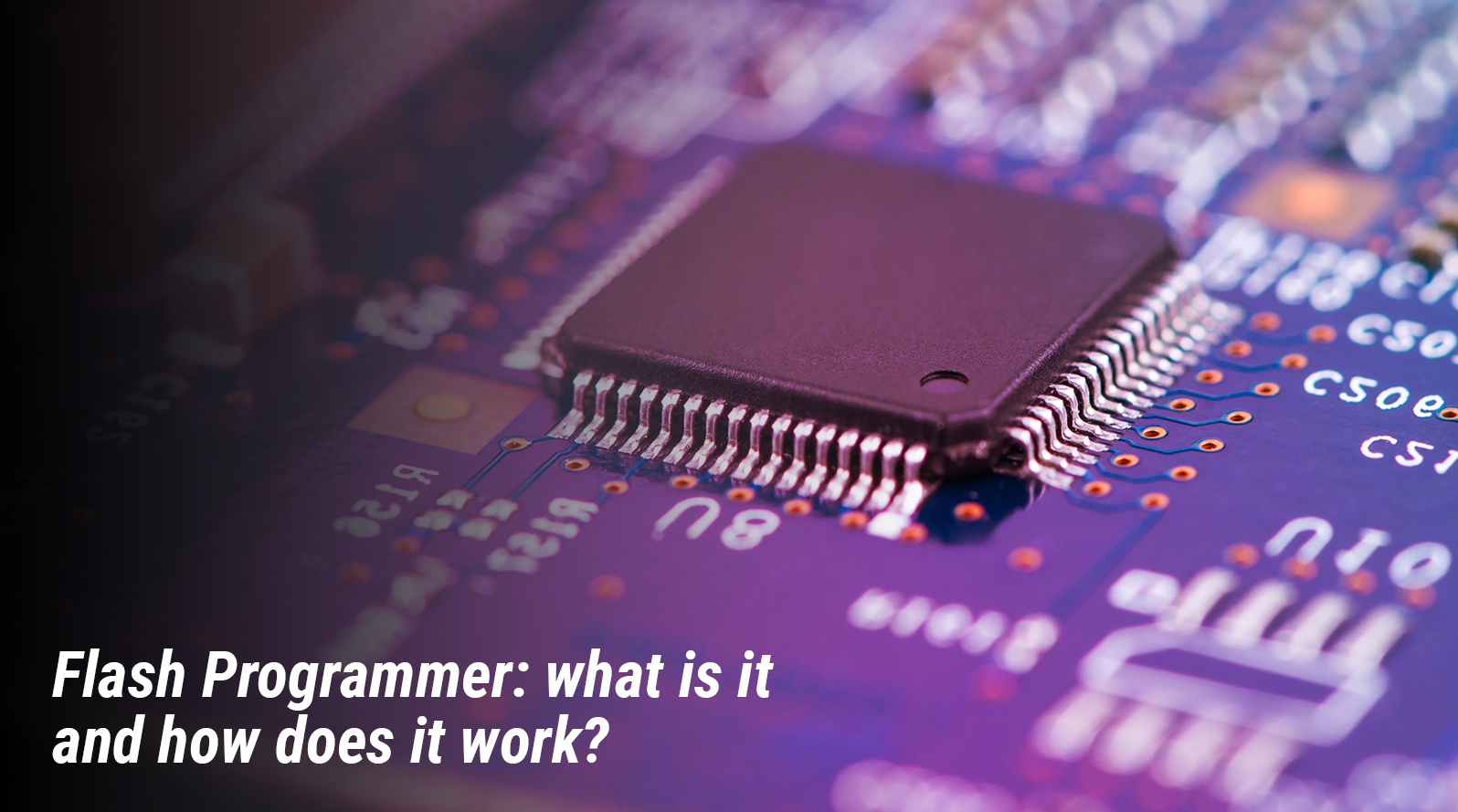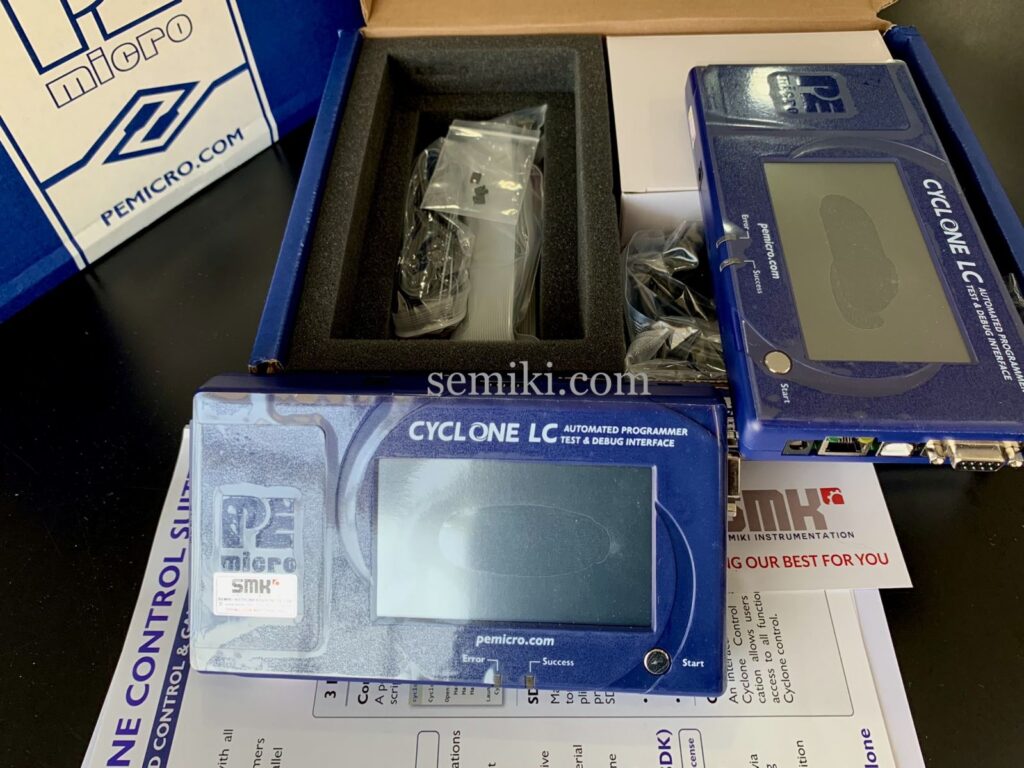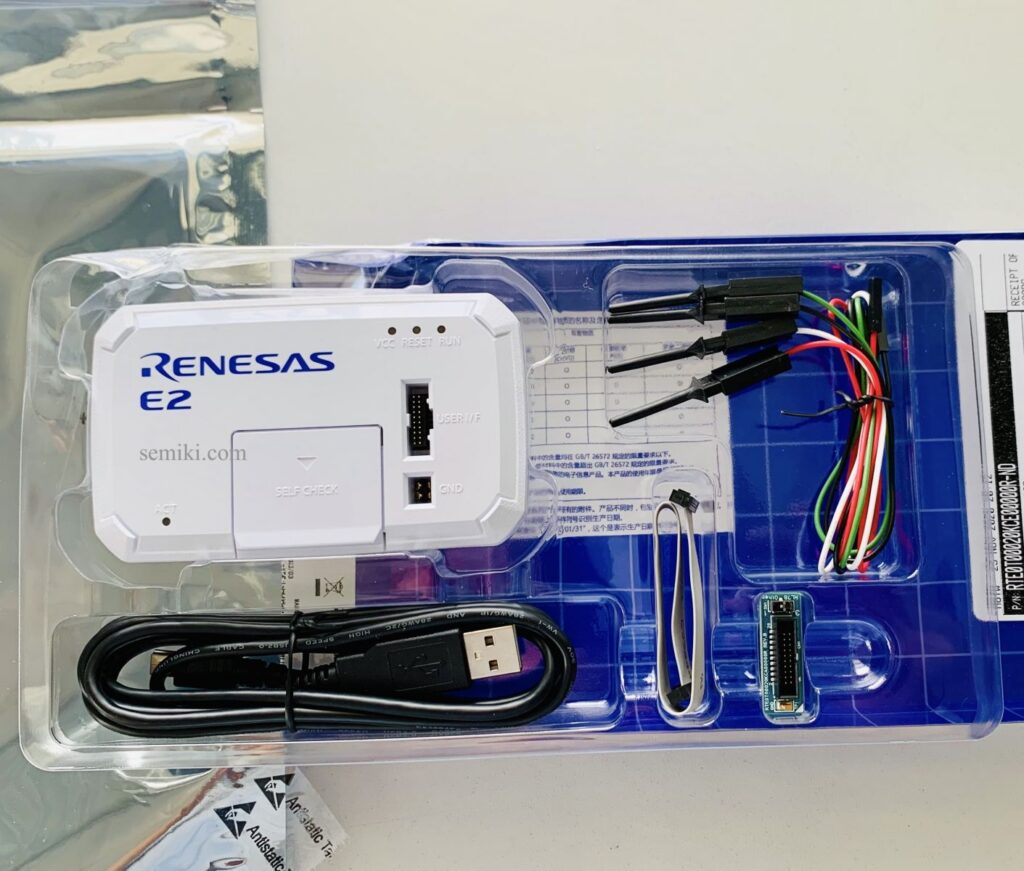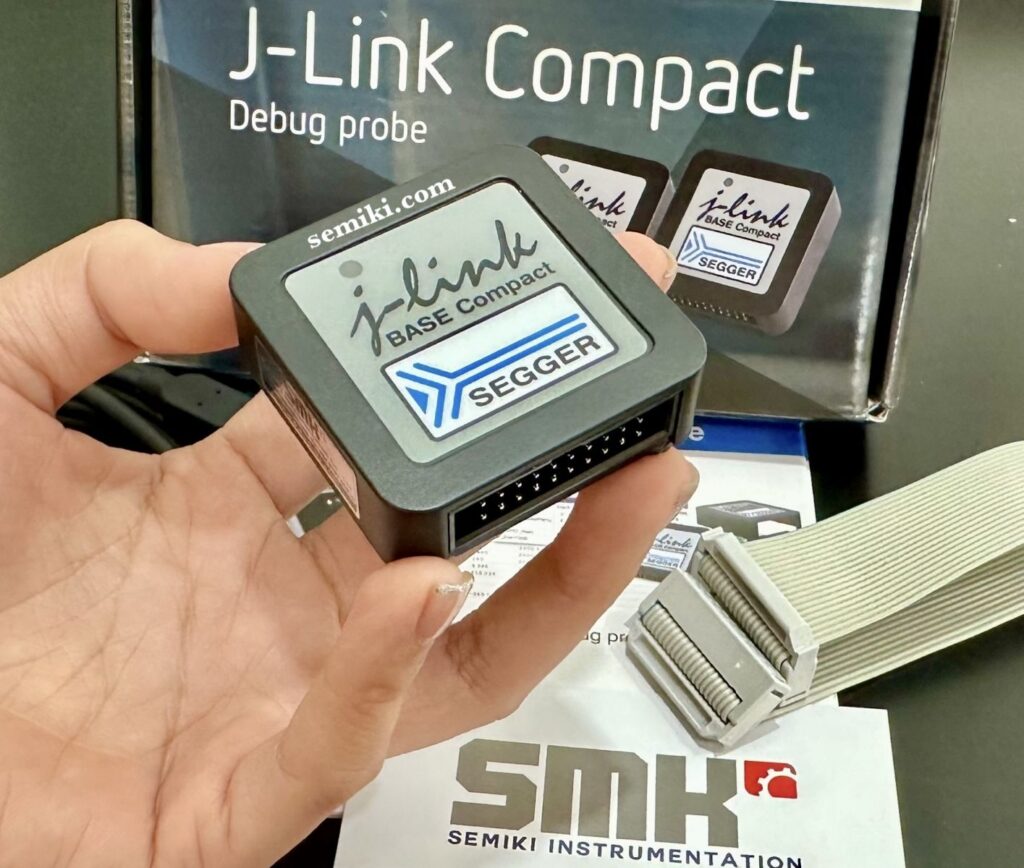
ROM loading machine (device programmer or ROM writer), sometimes called ROM loader good charging circuit, IC programming machine; Is a specialized electronic device used in the field of computer hardware or embedded software (firmware – hardware control software).
It has the function of configuring (such as reading/writing/erasing/authenticating/blanking) semiconductor memory chips of programmable non-volatile integrated circuits (ICs that can retain memory even when the power supply is disconnected) such as EPROMs, EEPROMs, Flashes, eMMC, MRAM, FRAM, NV RAM, PALs, FPGAs or programmable logic circuits…
Function
ROM loaders are often used to write data to non-static memory-type semiconductor memories used in electronic products/boards. Charging is done by inserting the memory chip into a charging dock (usually ZIF clamp type) on top of the loading machine (off-board programming), or using a piece of cable to connect. directly load the machine's control pins to the board containing the memory chip (on-board programming: seamless loading type, including two loading types: In-circuit programming and In-system programming); Then, the data is transferred into the memory chip by supplying electrical signals from the corresponding control pins of the charger to the required pins of the memory chip. Some memory chips have a serial interface for receiving programmable data (SPI or JTAG interface, for example); Others require data to be loaded via parallel interface control pins, which typically require a high-voltage load pulse to write the data onto the memory chip.

System Load IC Program Automation On PCB Circuit Board SEMIKI
Normally, the ROM loader is connected to a personal computer via a printer port, USB port or LAN port. A software program is installed running on the computer then transmits data to the loading machine after selecting the memory chip code to be loaded, the communication port type, and then begins the loading process to read / write/delete/authenticate/blank data inside the memory chip. To make it more convenient for users, especially in production areas, to continuously load a series of memory chips conveniently, one can integrate the control, display & storage functions inside the Block Loader. Stores loading data so that the loading machine can operate independently (stand-alone), performing loading work without having to connect or communicate with another personal computer.
One of the most prominent and important features of a Rom loading machine is the programming algorithms that the machine is capable of supporting. This is because each chip has a corresponding loading algorithm (or protocol) defined by the chip manufacturer; Therefore, only Rom loading machines that support the corresponding loading algorithm for the memory chip to be programmed can configure and communicate with it. And the fact is that new memory chips are regularly released and supplied to the market, so the number of new memory chip codes and algorithms loaded for new memory chips also need to be correspondingly added to the tools. IC programming machine.
Classify
There are many ways to classify ROM loaders such as: classifying by programming type, by supported chip type, or by capacity / number of loading channels (socket sites).
By submission type: is divided into two types
– Type of off-board loading machine: Parallel loading (or often called socket loading), when single discrete chips will be plugged into the socket adapter to load data (through the parallel communication interface) and then be retrieved. (pick up) from the socket to attach it to the target board. This type of loading is often used in production due to its ability to load and prepare a large number of chips before processing and soldering components onto the board => Meets the requirements well. Mass and large-scale production of electronic products.

Automatic chip loading system combines the flash programmer Segger Flasher Portable PLUS
– Type of on-board feeder: can be called serial charging; This type of charging is divided into two types: in-circuit charging (ICP - In Circuit Programming) and In-system charging (ISP - In System Programming). This type of loading will load data to the chip while the chip is mounted on the target board through the serial loading interface between the loading circuit and the chip. Because it depends on the target board when loading, it is sometimes complicated and slows down the loading process if many different chips need to be loaded; On the contrary, if you only want to reload one chip of the target board during application development, it is very useful, saving time and costs. => Responds well to requirements at the application development stage or product upgrades and repairs; It is also often used for functional testing (FCT) in mass production of certain types of products using electrostatic-sensitive memory chips.
Note: Serial loading (on-board) usually does not have the ability to interfere with the memory areas and configuration parameters of the chip as much as parallel loading (off-board). Therefore, in some cases where it is necessary to change the default configuration and/or reload loader software data (ISP loader code) of a chip that supports on-board loading, it is required to use parallel loading (off). -board) is fine.
According to supported chip types: can be divided into two types viz Multi-function loading machine (supports the ability to load most different types of memory chips) and loading machine (or specialized loader, only supports the ability to load certain types of memory chips).

Programming kit Cyclone flash is a powerful tool for in-circuit programming, debugging, and testing of MCU devices.
Microcontrollers are an important part of the semiconductor market.
Every year, thousands and thousands of these components are produced using them in the mass electronics market, of which the automotive sector is the main sector, followed by other important market sectors such as electronic devices. household appliance.
The microcontroller needs to be programmed in a certain way and most importantly in a timely manner. This is the reason for the flash programming system's existence.

RENESAS E2 emulator is an advanced on-chip debugging emulator and flash programmer developed with the aim of improving development efficiency.
A flash programmer typically consists of a hardware device or software application that communicates with a device containing a flash memory chip using a programming interface such as JTAG, SPI, or I2C. The programmer sends data and commands to the flash memory chip, allowing it to be programmed or reprogrammed with new data or code.

According to productivity or number of submission channels: can be divided into three types: single site programmer (single site programmer, can only load one chip at a time), multi-channel programmer (Multi sites or Gang Programmer, can load multiple chips at the same time) and automatic loader Automated Programming System / Auto-handler Programming Machine, using robot arms instead of human operations to load a large number of chips simultaneously and continuously for mass production series).
SEMIKI As a market leader in System Programming solutions and having deployed numerous programming and chip programming systems, Semiki products can support more than 10,000 devices in the automotive, industrial electronic circuit boards, appliances, military, medical and aerospace markets.
CONTACT:
SEMIKI Measuring Equipment Company Limited
Email: sales@semiki.com
Office phone: +84 9797 61016